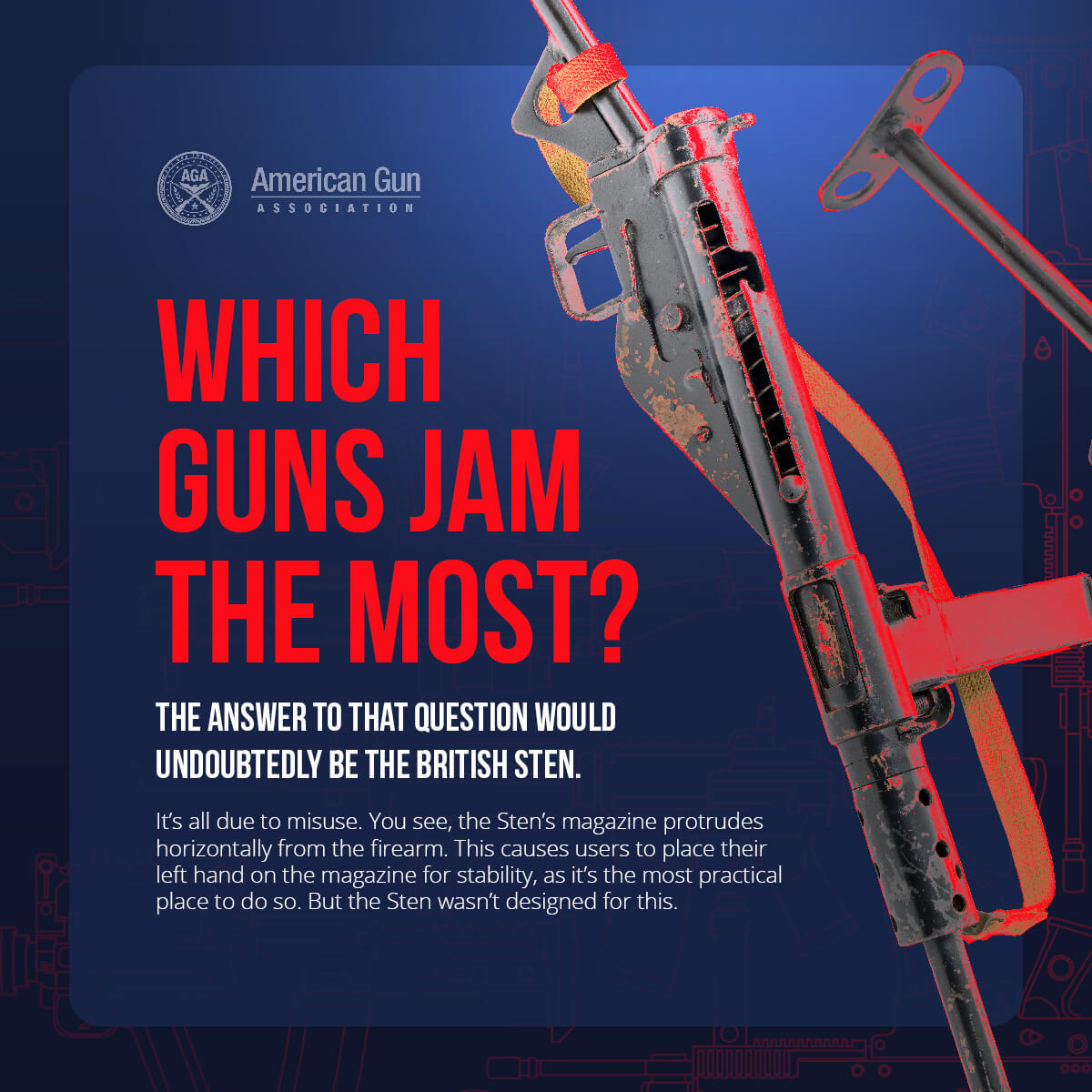
Interestingly enough, guns can be fired in space.
According to Peter Schultz, a Brown University astronomer, the only noticeable difference between firing one on Earth and in space is in space, the resulting smoke trail “would be an expanding sphere of smoke from the tip of the barrel.”
However, you would also be propelled backward, most likely a few centimeters per second. Though of course, if you don’t have any visual frame of reference, you wouldn’t even be able to tell.
Theoretically, the bullet could be propelled forever. However, it’s more likely the gravitational pull of a planet such as Jupiter would attract it.
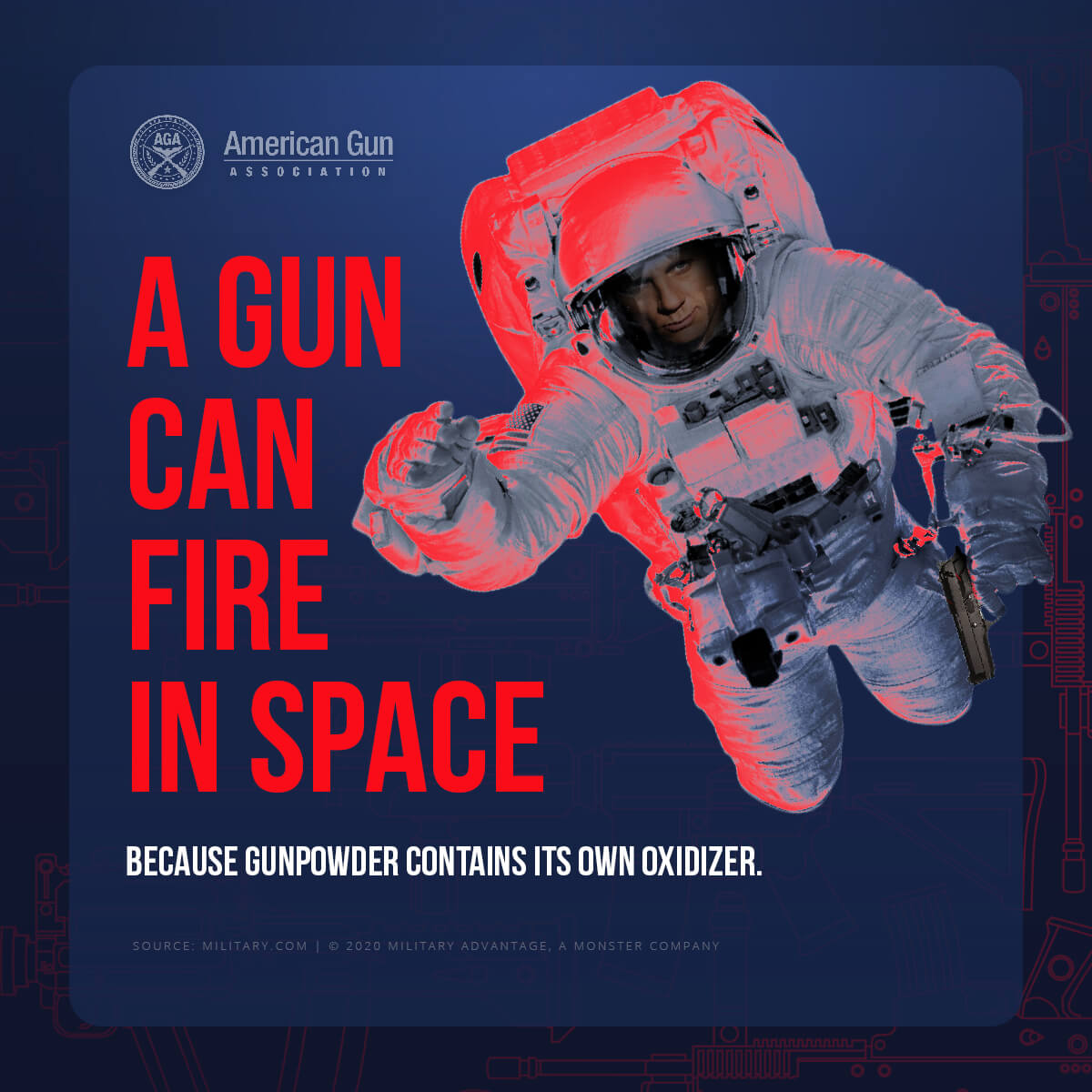
This is an odd one, because the answer is both yes and no.
Normal guns won’t work underwater – at least, not very well and not for very long. The ammunition is self-contained, so the primer will still ignite the gunpowder once the trigger has been pulled. But the water will gum up the works, making it increasingly difficult to get the primer set off.
Regular rounds are also ill-designed for use underwater. Their range and accuracy are drastically reduced so as to be pretty much useless.
However, starting in the 1970s, special underwater guns were created. They use a variety of spear-like projectiles, which work underwater.
For example, the German Heckler & Koch P11 Underwater Pistol uses fin-stabilized steel darts about 3.9 inches long. The darts are rocket-propelled and can be fired effectively up to 50 feet when near the surface, with their range dropping the deeper you go.
You only get five shots, though. Once all five darts are fired, you need to send the P11 back to the manufacturer so they can reload the self-contained barrels for you.

Yes!
Up until the late 1960s, passengers were allowed to legally bring their firearms on board with them. However, the gun had to be in your carry-on luggage, not on your person. This changed after “Hijackings to Cuba” of the 1960s.
One member of TheHighRoad.org forum says as far back as the 1930s (when their mother was a stewardess), loaded guns would need to be left with the pilot and kept secured in the cockpit for the duration of the flight. The user also says their brothers often brought their hunting rifles on-board, though they were expected/required to unload the firearms and leave them in the cockpit.
Law enforcement officers are still allowed to carry their firearms on planes, albeit under certain special circumstances.
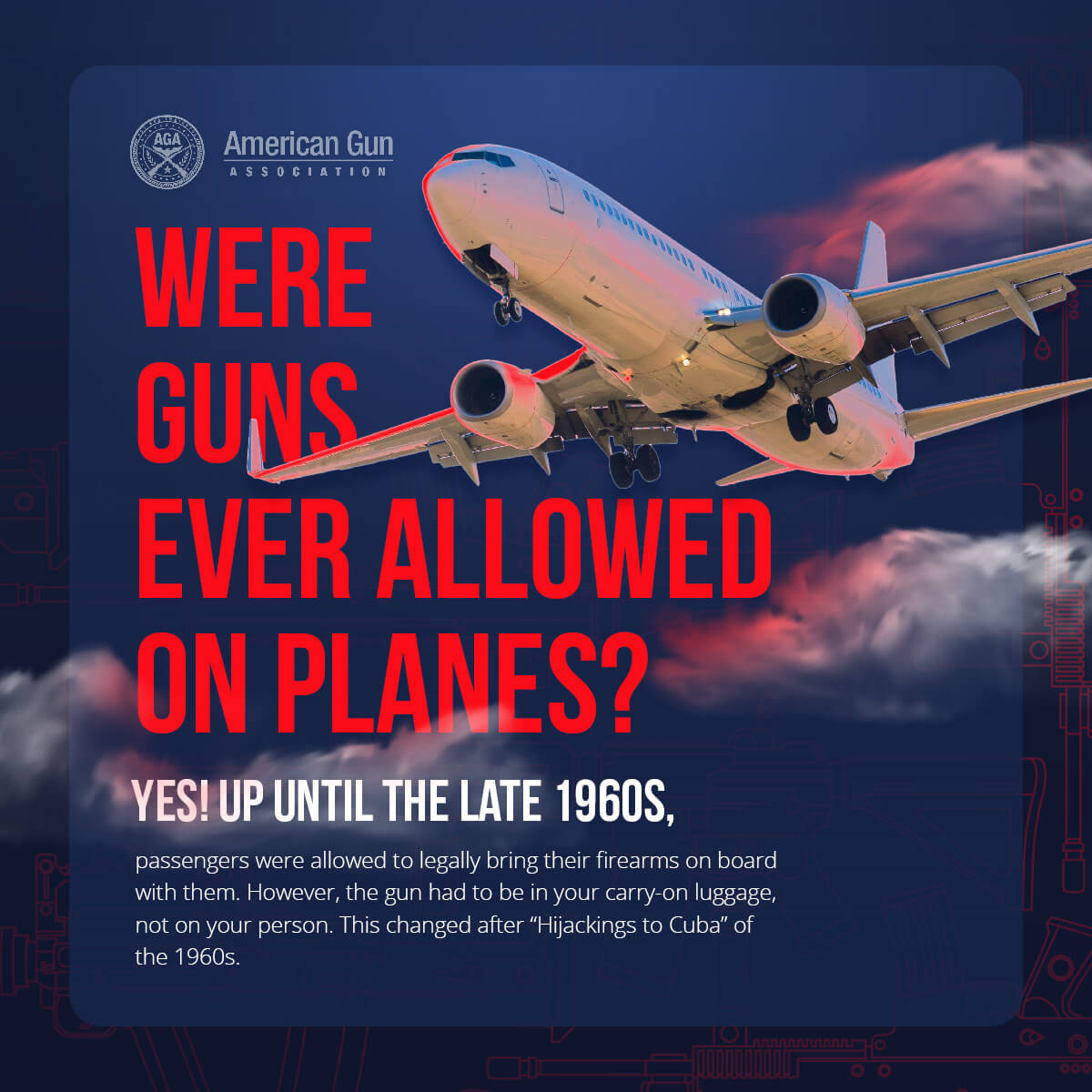
To answer this, we need to go way back to about 850 CE, when Chinese alchemists were thought to have first discovered gunpowder’s explosive properties. They were reportedly trying to invent an elixir of life and mixed potassium nitrate, sulfur, and charcoal together.
The black powder was first used for fireworks, but some primitive cannons and grenades were soon developed. Hollowed bamboo tubes were also packed with small projectiles and gunpowder to be used as rudimentary handguns, though the range was quite limited.
So it turns out some of the scenes in Disney’s animated movie Mulan weren’t as far-fetched as one might think!
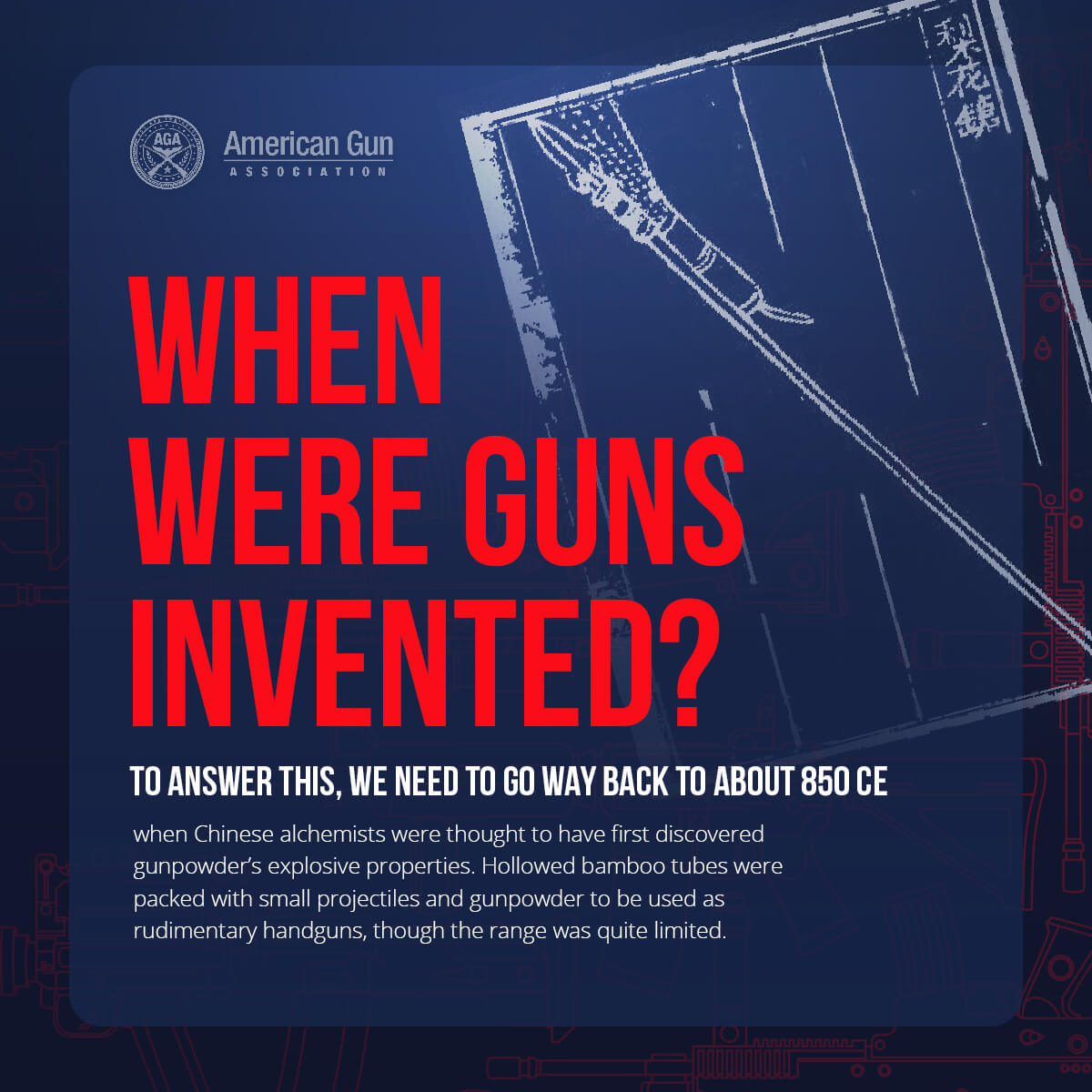
Well, we already know some Chinese alchemists accidentally invented gunpowder, which quickly started getting used in cannons and grenades. But do we know who invented the first of those primitive bamboo handguns, or even bombs?
It turns out the first proto-rocket launcher might have been invented by Yue Yifang and Feng Jisheng, two Song dynasty generals, in 969 CE. They used gunpowder tubes (most likely made of hollow bamboo) to fire arrows strapped with a back of gunpowder.
A few decades later, in 1000 CE, a Song dynasty soldier named Tang Fu designed the first protobomb, a gunpowder pot.
Wujing Zongyao, a Chinese military compendium written between 1040 and 1044, also mentions “the thunderclap bomb,” which might be considered the first real bomb.
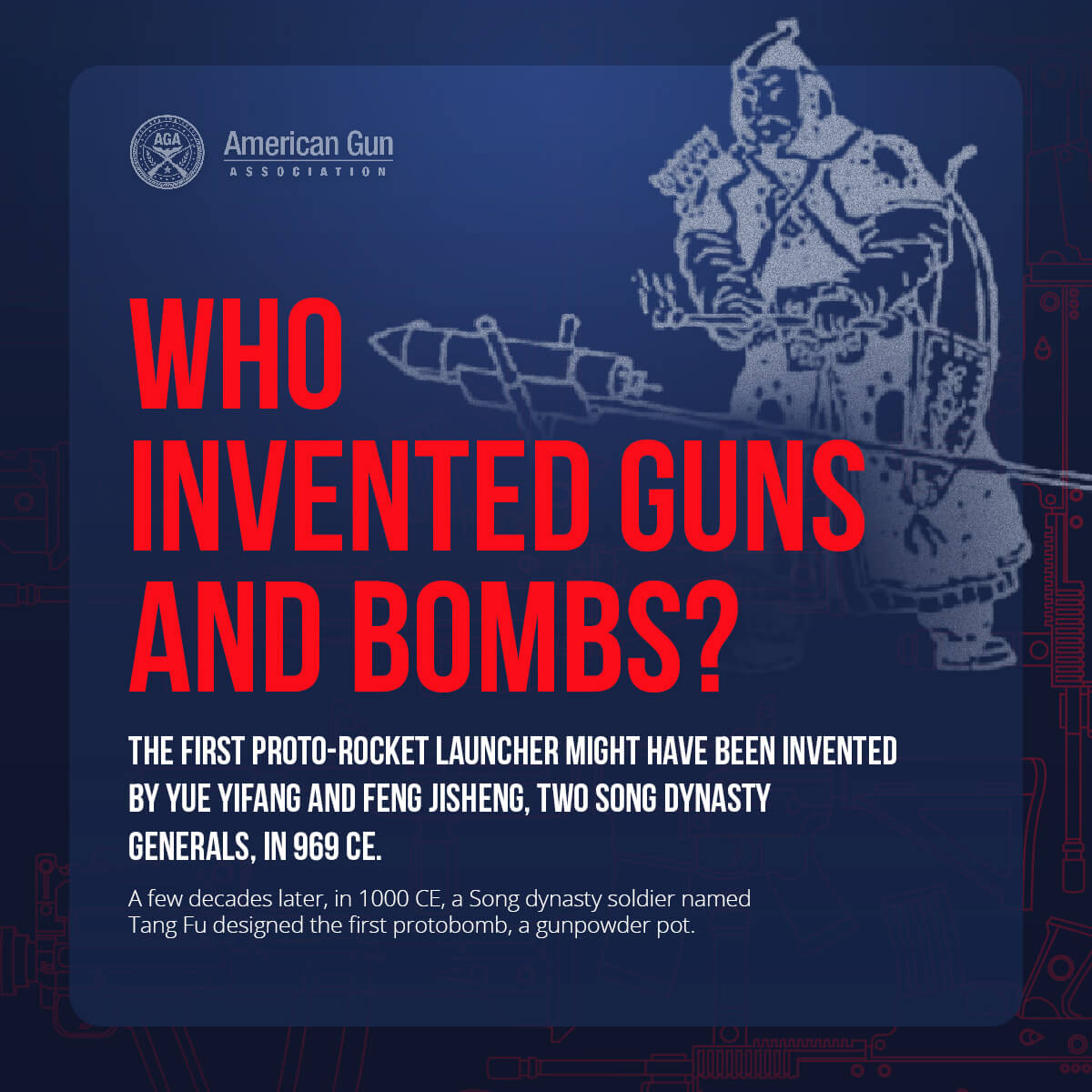
It’s fairly well-established that firearms were first imported to Europe via the Silk Road in the 1300s, whereas the Crusades took place between 1095 and 1291.
So while there were some absolutely brutal weapons used during the Crusades, guns and other gunpowder weapons were not parts of the arsenal.
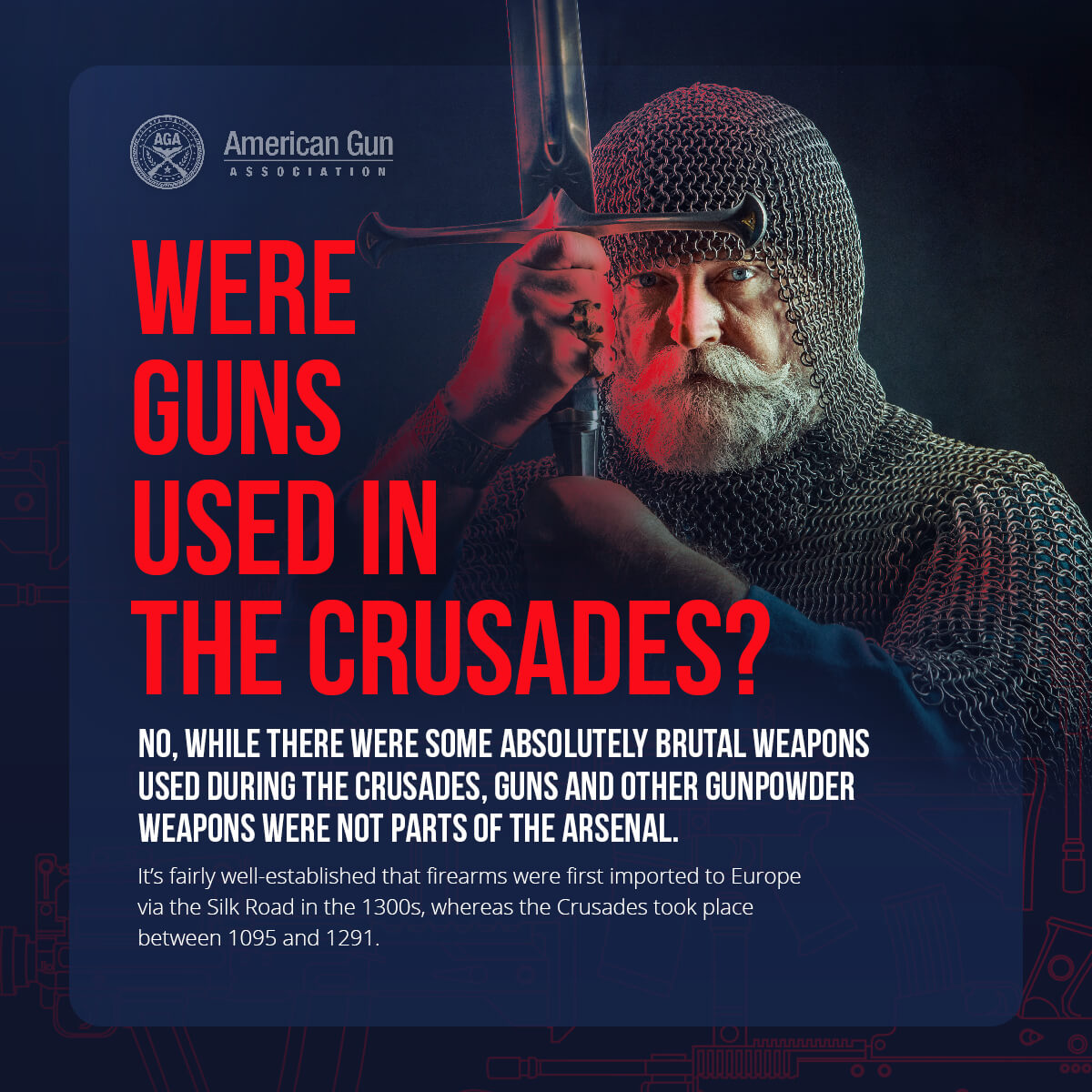
Medieval times, more correctly referred to as the Medieval Period and mistakenly dismissed with the term “Middle Ages,” was a fascinating point in Europe’s history. It’s commonly said to have begun with the fall of Rome in 476 CE and ended with the birth of the Renaissance in the 14th century.
But historians are quite divided as to when during the 14th century the Renaissance truly began in Italy. We already know that cannons first came to Italy in the same time period, but we can’t really tell whether there’s any overlap between that arrival and the end of the Medieval Period.
It’s probably safest to assume guns were not used in Europe during the Medieval Period and that their use likely either coincides with the start of the Renaissance or came about after the Renaissance was already fairly well established.
However, we should remember guns were being used in China during this time. So maybe we could say guns were used in Medieval times, just not in the region associated with that period.
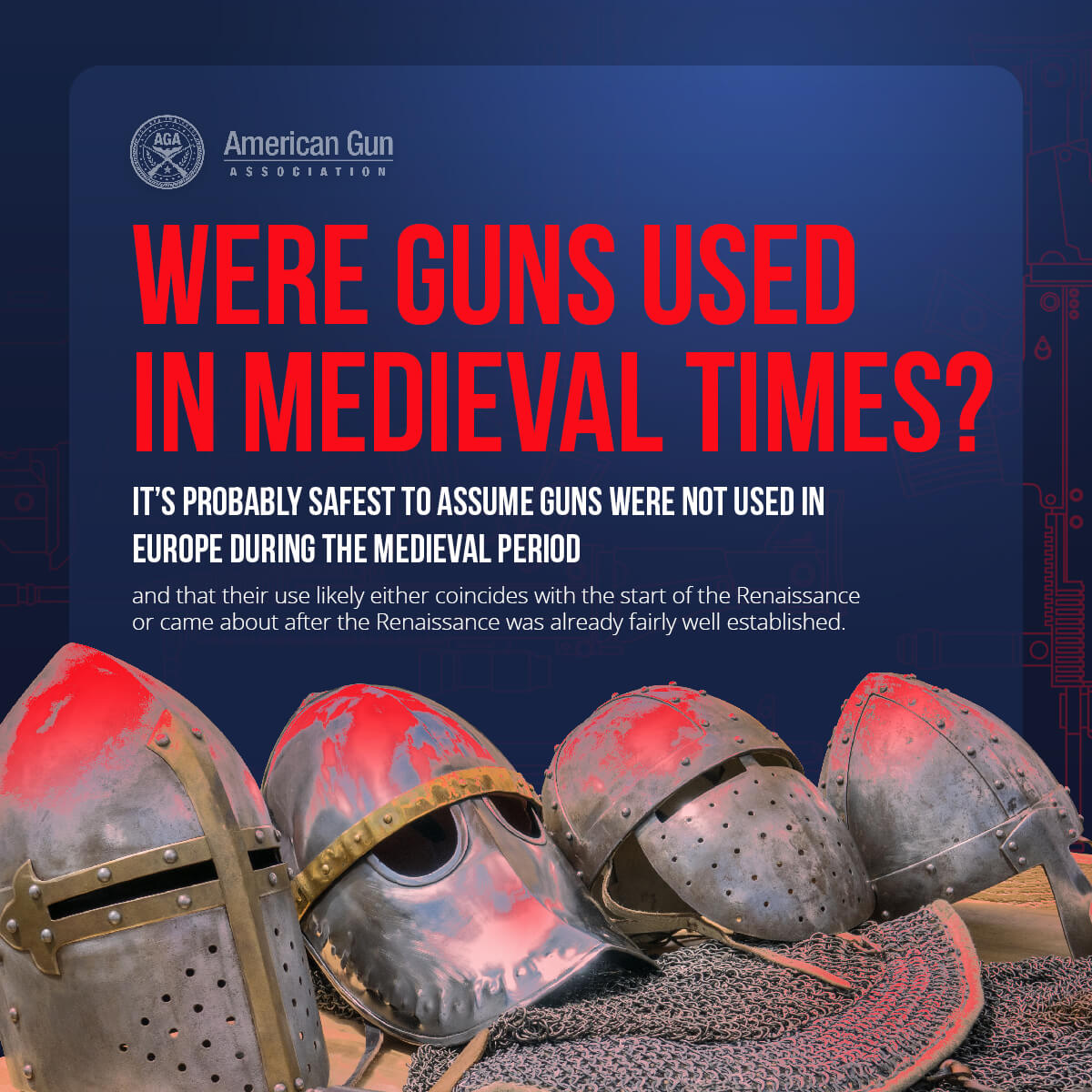
This question follows quite nicely from the previous one, as the 100 Years War took place amid England and France between May 1337 and an unofficial (though successful) truce called in August 1475. Some historians put the end of the 100 Years War at 1453 instead.
This puts the series of wars (which actually lasted 138 years) at least partially after the beginning of the Renaissance and certainly after Italy first received cannons.
But that doesn’t necessarily mean either side of the 100 Years War used or even had access to guns.
Well, records show England was producing its own gunpowder in the Tower of London as early as 1346 – just 9 years after the war started. There are also some breech loading cannons dated 1338, while records show English payment for guns stocked with a long stave between 1373 and 1375. Edward III’s royal account of 1338 also mentions a ship that had 3 cannons and a handgun.
So it’s certain at least one, possibly both nations had knowledge of and access to firearms during the 100 Years War. Edward the Black Prince of Wales also supplemented his army’s ranks with “handgonners” who used the long stave handguns of the time during the 100 Years War.
So ultimately, yes, guns were used in the 100 Years War. However, they weren’t the most prevalent weapons of the conflict, with the English longbow still taking the spotlight until England actually started to run out.
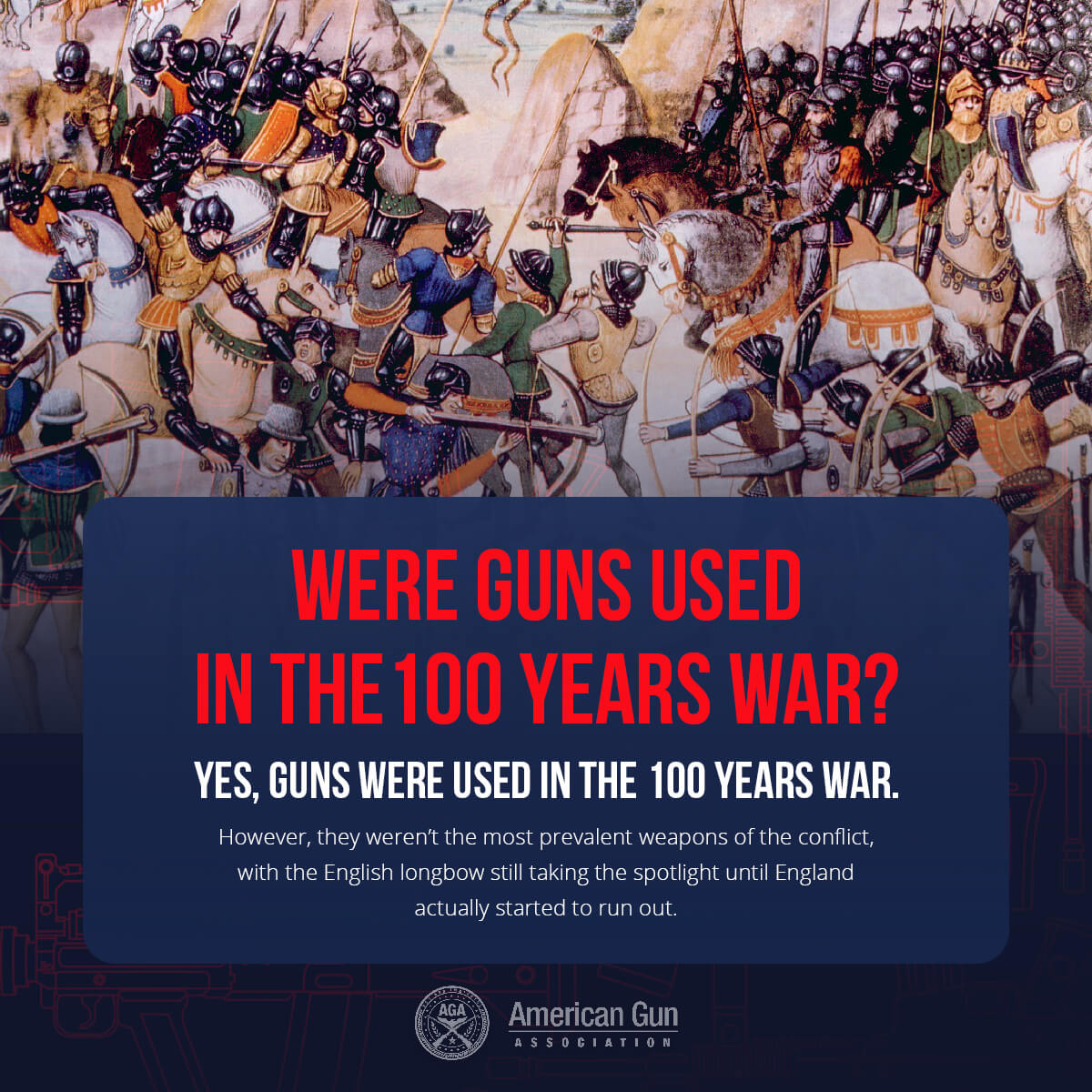
Yes – and it’s quite a contentious history that reminds us we have Second Amendment rights in America for good reason.
In 1931, Germany’s then-ruling party – the Weimar Republic – discovered plans for a Nazi takeover involving the confiscation of guns. The Weimar authorities authorized and enforced gun registration and the confiscation of firearms in an attempt to thwart these plans.
But after the Nazi party took control in 1933, they used those records to identify and disarm their political opponents and, of course, the Jewish community. Hitler went on to sign a Gun Control Act in 1938 that reinstated the ownership of guns, but only for those deemed allies of the state.
Some guns have since been banned in Germany again.
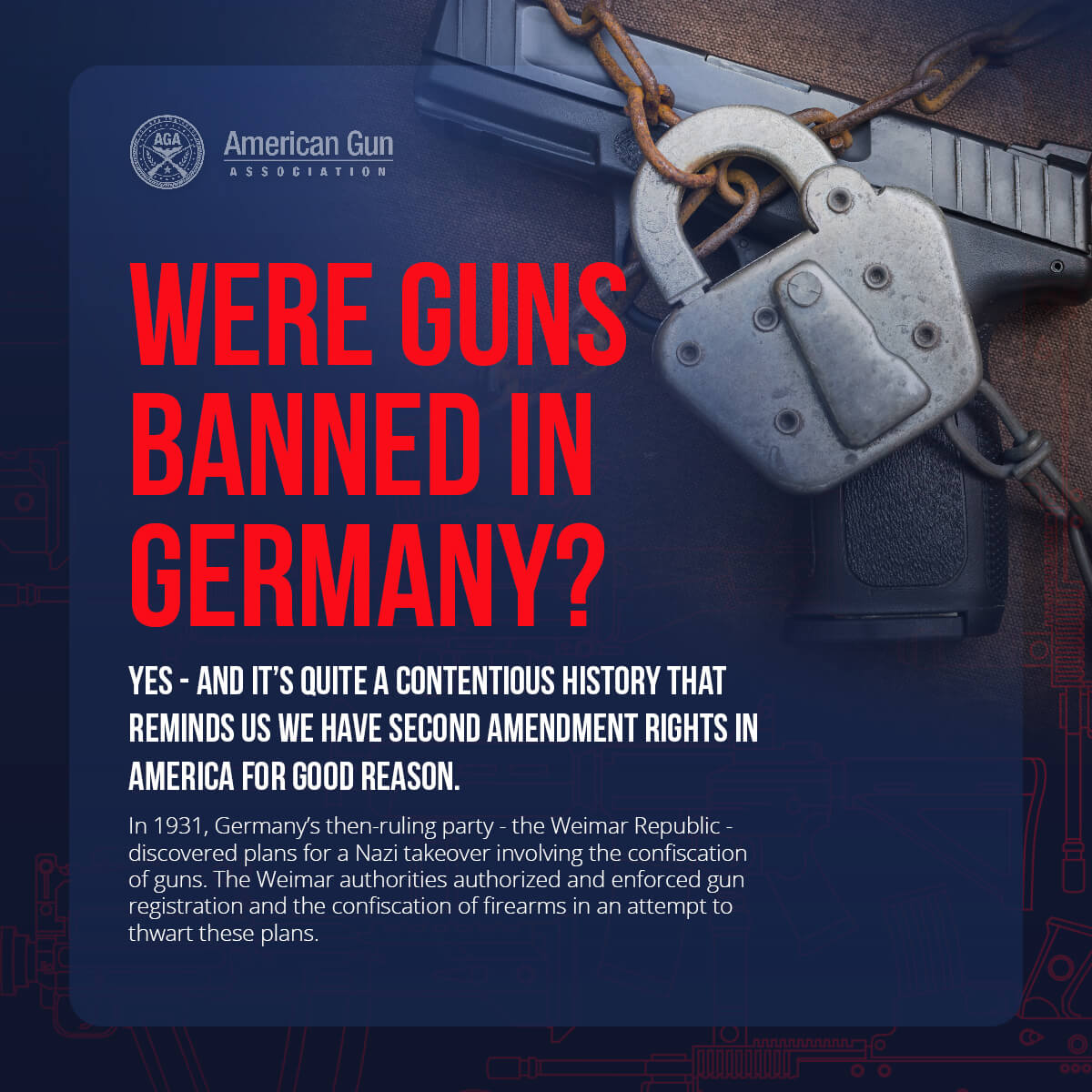
We thought we’d end with a more practical question… though we’re going to flip it on its head a little by asking what gun jams the most.
The answer to that question would undoubtedly be the British Sten.
As explained by former Firearms Sales Associate at Academy Sports & Outdoors, Austin Taylor, it’s all due to misuse.
You see, the Sten’s magazine protrudes horizontally from the firearm. This causes users to place their left hand on the magazine for stability, as it’s the most practical place to do so. But the Sten wasn’t designed for this.
As a result, the magazine well and magazine lip quickly become damaged, causing it to jam every few shots. You’re also only supposed to charge the magazine with 28 rounds, not the full 30 it can hold.
When it comes to other guns, too much lubricant is a common cause for jams!
Do you have any interesting gun-related questions you’d like to see us answer? Let us know!
